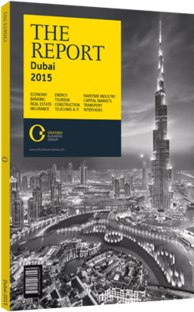Dubai's need for affordable housing presents challenges for developers
The delivery of affordable housing has become a major conundrum across the entire MENA region in recent years. According to Jones Lang LaSalle, the affordable housing deficit across the MENA region stood at 3.5m units in 2011. The largest contributor to this is Egypt, which currently has a shortfall of 1.5m units, while Morocco and Saudi Arabia also have substantial deficits. In this regional context, Dubai’s affordable housing situation looks more manageable.
Liberalised Market
Even so, according to Maysa Shocair, the managing director of the GCC Affordable Housing Institute, the emirate will need to supply 100,000 new affordable units by 2020. While this represents a very small percentage of the necessary regional inventory, it is a sizeable challenge in the context of Dubai’s current building plans. According to the US commercial real estate company CBRE, the pipeline of total residential supply across all income levels stands at 55,000 units to be delivered by 2017.
Dubai’s competitive and liberalised real estate market has given the emirate’s developers the ability to maintain large markets in the luxury and middle-income market segments, meaning that it will not be easy to increase the affordable housing stock.
“The real area of demand is accommodation for people working in the services sector, but no one is focused on this yet,” Matthew Green, director and head of research at CBRE Middle East, told OBG. “It is more challenging to build affordable units because the margins are so much higher in other segments.”
For example, one of Dubai’s flagship real estate developers, Emaar Properties, has been able to achieve gross margins touching 50% as a result of its government-provided land bank. As is the case across the region, land costs and availability are some of the largest impediments to construction firms delivering low-cost units.
“There are a wide range of land plots available in each of the prime development areas across Dubai, but prices at current levels are cost prohibitive for most mid-tier private developers,” Vinod Pillai, general manager for the UAE at RP Group of Companies, which is active in the sector, told OBG.
Land Grants
The Dubai Land Department and its Real Estate Regulatory Agency are currently studying possible interventions to support affordable housing, including the introduction of land grants to developers in exchange for a certain percentage of the project being built as affordable units for rent. Such an arrangement will depend on the availability of land banks in suitable areas. Work in other parts of the UAE could be used as a model for Dubai. Abu Dhabi, for example, has had regulations on affordable unit quotas within new developments since 2010.
The Urban Planning Council mandates that 20% of residential gross floor area in developer-led multi-unit residential buildings be allocated as middle-income rental housing. However, according to several brokers with whom OBG spoke, this has not been implemented comprehensively on new projects. Further afield, Arabtec, Dubai’s largest publicly listed construction firm, has signed a memorandum of understanding with the Egyptian government for a $40bn project to construct 1m affordable housing units in Egypt.
The project, which will be built on 160,000 sq metres of land in 13 locations donated by the government, will deliver the first units in 2017 and is expected to be fully completed in 2020. This was followed in April 2014 by an announcement that the company plans to implement a similar scheme in Abu Dhabi.
Further to this, Emaar Properties stated in October 2014 that its associate company, Dawahi Development, would soon be announcing an affordable housing project in the UAE. The precise financial details of all these schemes, including the funding and pricing of such projects, have not been released.
However, these announcements suggest more generally that the construction industry is gradually waking up to the urgent need for affordable housing in the emirate, the UAE and the wider MENA region, as well as its potential to help the overall economy as a whole.
You have reached the limit of premium articles you can view for free.
Choose from the options below to purchase print or digital editions of our Reports. You can also purchase a website subscription giving you unlimited access to all of our Reports online for 12 months.
If you have already purchased this Report or have a website subscription, please login to continue.

